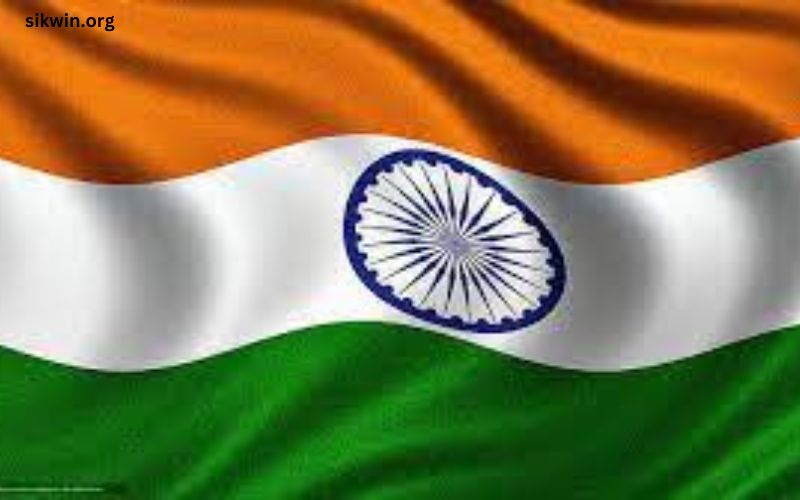“Sare Jahan Se Acha” is a beloved patriotic song that has captivated the hearts of millions across the world. Penned by the renowned Urdu poet Muhammad Iqbal, this iconic piece has transcended linguistic and cultural boundaries, becoming a symbol of unity and national pride. As you delve into the rich tapestry of its lyrics, you’ll uncover a profound message that resonates with people from all walks of life.
Historical Significance of “Sare Jahan Se Acha”
The origins of “Sare Jahan Se Acha” can be traced back to the early 20th century, when India was still under British colonial rule. Iqbal, a visionary thinker and poet, composed this masterpiece as a rallying cry for the Indian people, inspiring them to rise up and assert their identity in the face of oppression. The lyrics, which translate to “Better than the whole world is our homeland,” became a rallying cry for the Indian independence movement, uniting people across religious and linguistic divides.
Analysis of the Lyrics and Its Message
The lyrics of “Sare Jahan Se Acha” are a poetic tapestry that weaves together themes of patriotism, spirituality, and universal brotherhood. The opening lines, “Sare jahan se achcha, Hindustan hamara” (Better than the whole world is our homeland), set the tone for the entire song, declaring the inherent greatness of the Indian subcontinent. As the lyrics progress, they touch upon the diverse religious and cultural heritage of the land, emphasizing the unity in diversity that has long been a hallmark of Indian civilization.
One of the most powerful aspects of the lyrics is the way they seamlessly blend the spiritual and the secular. Iqbal’s invocation of the divine, “Mazhab nahi sikhata aapas mein bair rakhna” (Religion does not teach us to harbor animosity towards each other), serves as a poignant reminder of the universal values of compassion and tolerance that should guide human societies.
Evolution of “Sare Jahan Se Acha” as a Patriotic Song
Over the decades, “Sare Jahan Se Acha” has evolved from a powerful political statement to a beloved patriotic anthem that transcends the boundaries of time and space. The song has been embraced by generations of Indians, who have found in its lyrics a rallying cry for their own struggles and aspirations. From being sung during the Indian independence movement to being performed at national events and celebrations, “Sare Jahan Se Acha” has become a touchstone of Indian identity and pride.
Popular Renditions and Versions of “Sare Jahan Se Acha”
The enduring popularity of “Sare Jahan Se Acha” has led to the creation of numerous renditions and versions of the song. From classical interpretations by renowned musicians to modern adaptations by contemporary artists, the song has been reimagined in a wide range of styles and genres. These diverse interpretations have not only kept the legacy of “Sare Jahan Se Acha” alive but have also introduced it to new generations of listeners.
Some of the most notable renditions of the song include:
- The classical version by legendary singer Lata Mangeshkar, which captures the grandeur and emotional depth of the lyrics.
- The soulful rendition by Pandit Bhimsen Joshi, which showcases the song’s spiritual undertones.
- The upbeat, contemporary version by Shankar-Ehsaan-Loy, which infuses the song with a modern, energetic flair.
- The instrumental version by sarod maestro Amjad Ali Khan, which highlights the song’s melodic richness.
Cultural Impact and Reception of “Sare Jahan Se Acha”
The impact of “Sare Jahan Se Acha” extends far beyond the realm of music and poetry. The song has become a cultural touchstone, deeply embedded in the collective consciousness of the Indian people. It has been used in films, political speeches, and educational curricula, serving as a powerful symbol of national identity and pride.
The widespread popularity and reverence for “Sare Jahan Se Acha” is a testament to its enduring relevance and the timeless appeal of its message. The song has been embraced by people across the political and ideological spectrum, uniting them in a shared appreciation for the values of unity, diversity, and patriotism that it embodies.
Inspirations and Influences Behind the Lyrics
The lyrics of “Sare Jahan Se Acha” draw inspiration from a rich tapestry of cultural and literary influences. Iqbal, the song’s author, was a renowned philosopher and poet who was deeply influenced by the Islamic mystical tradition, as well as the writings of European thinkers such as Nietzsche and Goethe.
The poem’s emphasis on the spiritual and universal aspects of human existence can be traced back to Iqbal’s own spiritual journey and his desire to reconcile the apparent contradictions between modernity and tradition. The song’s celebration of India’s diverse cultural heritage, meanwhile, reflects Iqbal’s belief in the essential unity of all religions and the need for mutual understanding and respect.
Exploring the Legacy of “Sare Jahan Se Acha”
The enduring legacy of “Sare Jahan Se Acha” is a testament to the power of art and poetry to transcend the boundaries of time and space. The song’s ability to inspire and uplift generations of Indians, as well as its universal appeal, has cemented its place as a timeless classic.
As you delve deeper into the legacy of “Sare Jahan Se Acha,” you’ll uncover a rich tapestry of cultural, political, and social significance. The song has been a rallying cry for the oppressed, a source of solace for the downtrodden, and a symbol of unity and resilience in the face of adversity. Its message of patriotism, tolerance, and universal brotherhood continues to resonate with people around the world, making it a timeless treasure that will endure for generations to come.
Translations and Interpretations of “Sare Jahan Se Acha”
The global appeal of “Sare Jahan Se Acha” has led to numerous translations and interpretations of the song’s lyrics. From English to various regional languages, the words of the poem have been rendered into a diverse array of linguistic forms, each version reflecting the unique cultural and historical context of its respective audience.
These translations have not only helped to disseminate the message of “Sare Jahan Se Acha” to a wider audience but have also sparked new dialogues and perspectives on the song’s deeper meaning and significance. By exploring the nuances and subtleties of these different interpretations, you can gain a deeper understanding of the universal values and aspirations that the song embodies.
Conclusion
In a world increasingly divided by political, social, and cultural fault lines, the timeless message of “Sare Jahan Se Acha” stands as a beacon of hope and unity. The song’s call for patriotism, tolerance, and universal brotherhood continues to resonate with people across the globe, reminding us of the shared values and aspirations that bind us together as a human family.
As you reflect on the legacy of “Sare Jahan Se Acha,” you are invited to join the countless individuals who have found inspiration and solace in its powerful lyrics. Whether you are a student, a teacher, a policymaker, or a simply a lover of poetry and music, the enduring relevance of this iconic song will undoubtedly leave a lasting impression on your heart and mind.
Discover the enduring legacy of “Sare Jahan Se Acha” and explore the rich cultural tapestry that it has woven over the decades. Share your own experiences and perspectives on this timeless patriotic anthem in the comments section below.





Awsome blog! I am loving it!! Will be back later to read some more. I am bookmarking your feeds also.